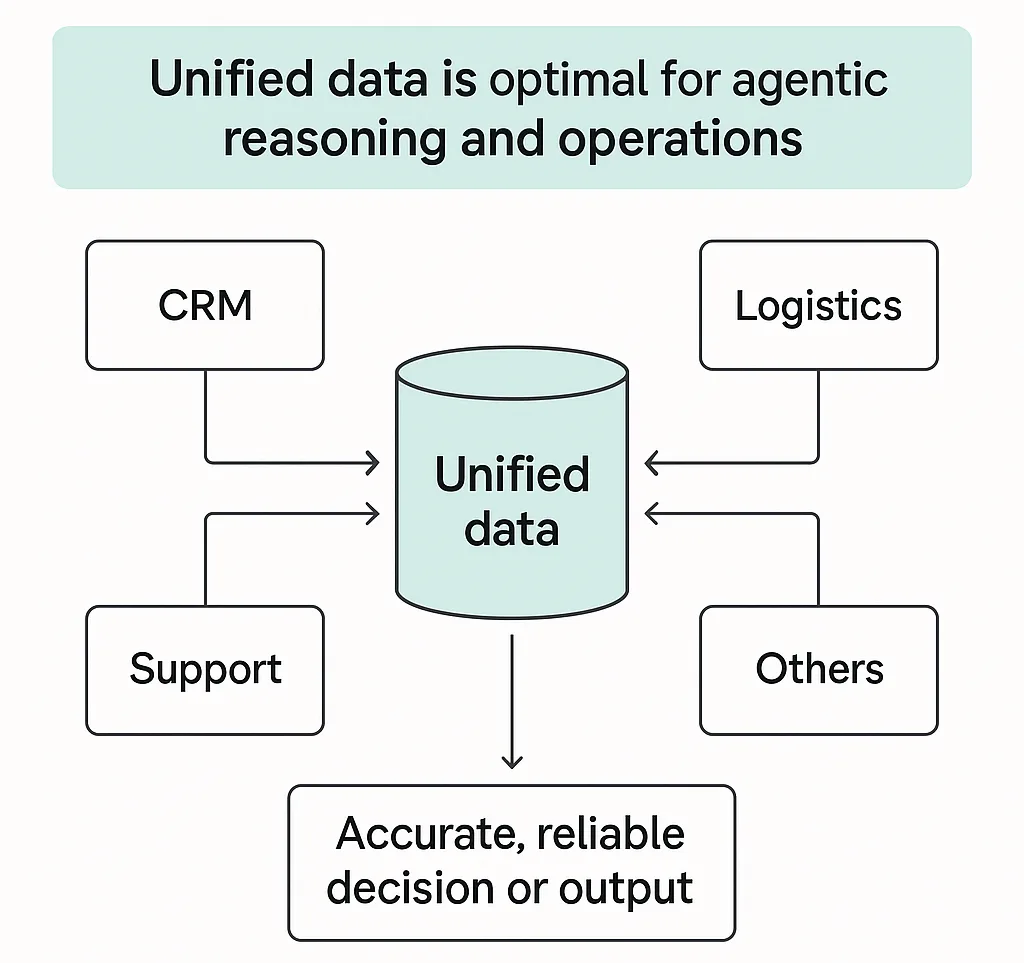Why data unification is crucial to trusting enterprise AI agents


When Manish Sood, founder and CEO of Reltio, asked his enterprise customers what they wanted from AI transformation, the majority said they wanted true agentic AI systems that could reason, act, and adapt in real time. “Seventy-five percent of what customers now want wasn’t solvable with prior-gen SaaS software,” says Sood. “It requires an agent’s ability to reason and make decisions.”
This shift from traditional automation to decision-based agentic workflows marks the dawn of a new era in what enterprise software can solve for. But in Sood’s eyes, unlocking this business advantage requires more than deploying an AI workforce. Success begins with the data that AI agents rely on to operate effectively. Without a foundation of quality, context-rich data, their autonomy invites chaos.
In this episode of MindMakers, Sendbird CEO John Kim sits down with Manish Sood to unpack why data-first architecture is vital to scaling and managing agentic AI you can trust—and what enterprise leaders get wrong about AI transformation. You’ll learn:
Why success with agentic AI begins with data readiness and unification.
How Reltio built a bridge from data integrity to scalable enterprise AI agents.
How Liberty Mutual cut its call response times from seconds to milliseconds with unified agent-ready data
The challenge: Fragmented data vs AI agent decisioning
Unlike traditional IT, AI agents can’t operate in a silo. To be effective, they need to access, interpret, and act on live data from multiple systems—CRM, support desk, logistics—all at once.
“Real-time, unified context is the difference between a generic action or a precise action that’s effective in the real world,” says Sood.
However, when he founded Reltio over a decade ago, Sood encountered a problem that no analytics dashboard could fix: data chaos. Since the start of the SaaS era, he says, enterprises have gone from three or four core systems to an average of 300–600 disconnected software tools.
In expanding their tech stacks, organizations inadvertently fragmented their view of customers, products, and operations. Marketing, Sales, and Compliance each had their own slice of truth, but no one had the whole picture. What used to simply result in operational drag has evolved into a critical barrier to deploying real-time, decision-making enterprise AI agent systems.

5 key questions to vet an AI agent platform
The solution: Data-first agentic AI architecture
Reltio was founded to solve this enterprise problem of data and software fragmentation. Its core mission: to unify every data source across the enterprise into a single, trusted foundation that all systems can use.
Thanks to the modular design of agentic AI, it’s now possible to create a unified, data-first ecosystem where agents operate securely and effectively at scale. Rather than feeding models inconsistent or incomplete information, data-first systems ground the reasoning of agents in a single source of truth. When every decision and action starts with the same verified context, organizations can scale AI that’s accurate, safe, and trustworthy.
“We’re moving from application-first to data-first architecture,” Sood says. “Instead of many silos serving the data, there’s a shift to one unified data layer serving many processes.”
At Liberty Mutual, for example, Reltio connected hundreds of disjointed systems into a unified customer view. What once took 5–8 seconds to resolve at the insurer’s call center now happens in around 300 milliseconds. This same infrastructure now powers AI agent–driven call scripts, next-best actions, and personalized cross-sells—all generated in real time and aligned with broader business goals and customer experience (CX) standards.
By unifying data for AI agents, Sood and Reltio not only created the foundation that all high-performance agentic systems rely on—they delivered the 360° customer view that CX teams have chased after for so long.

The AI adoption playbook: Top-down meets bottom-up
AI adoption in the enterprise isn’t just a matter of a technology overhaul, in Sood’s view, but of bold leadership. He believes success emerges when top-down urgency is paired with bottom-up enablement that meet in the middle to create quality products and ROI from AI development.
This means embedding AI engineers across departments to drive practical experimentation, helping teams discover what AI can automate, enhance, or reimagine in their daily workflows.
“Give every team an AI engineer and an AI-first mandate,” he says. “Rethinking these core processes from an AI-first perspective is key to reinventing how each function works.”
This isn’t about replacing people, but about scaling agents’ impact exponentially through agentic systems that never stop learning or executing.
The C-suite’s role, Sood says, is to set the vision and inspire confidence. Yet many leaders remain hesitant, worried about job displacement, hallucinations, or loss of control over their digital workforce. In doing so, they risk missing the far larger opportunity ahead. Grounding AI in a trusted system of context and unified data is that key step that enables organizations to produce precise, accurate, and scalable AI outcomes—turning uncertainty into measurable ROI.

Build lasting customer trust with reliable AI agents
Velocity is the real moat
Once organizations feel they can trust AI, the key differentiator becomes velocity. In this new landscape, Sood says, what separates winners from losers isn’t their coding, compute power, or model choice. It’s their time to value.
“Models will commoditize over time,” says Sood. “Time-to-outcome is what will become the moat.”
To deliver faster, Reltio has adopted a forward-deployed engineering model: embedding small, hands-on teams with customers to co-create solutions before productizing them. As with Liberty Mutual, these forward-deployed teams focus on the proof of concept (POC) first, prove value, then move to productize.
Sendbird takes a similar approach with its AI concierge for CX and support, collaborating directly with customers to deploy AI agents that are safe, observable, and enterprise-grade from day one.
The future: Category consolidation and the UI of AI
Sood foresees a coming wave of AI platform consolidation and pricing model transformation. The per-seat SaaS model that was built for human users will give way to per-agent, compute, or transaction-based pricing.
“Per-seat pricing will fade. Expect compute, per-agent, or transaction-based pricing models in the future,” says Sood.
He also warns against long-range planning in an era where traditional innovation cycles are proving cumbersome. Rather than planning in five to ten-year horizons, stay more agile by looking two to three years ahead to better align with the state of the AI market.
As data unification and agentic architectures mature, Sood sees the next shift being how humans interact with AI-powered software. In this future, employees won’t navigate complex dashboards; they’ll simply ask for information, and the AI will generate the most relevant visualization or response in the moment. The user interface (UI) of AI itself will become dynamic and personalized, offering a visual reflection of agentic reasoning in action behind the screen.

Read the full report + in-depth CX case studies
Data-first AI = Customer-first AI
In Sood’s view, AI isn’t just another tool—it’s a complete shift in architecture and emphasis for enterprises. The success of Reltio’s playbook in unifying enterprise data for agentic AI operations suggests that tomorrow’s AI winners will be those who turn data readiness and unification into performance today, forging a stable foundation from which to innovate and expand into the agent-driven future.
For Sendbird, this conversation reinforces a core truth: trusted AI for CX depends on a dual foundation of unified data and trust. Without a core of unified context and transparent AI governance, enterprises will struggle to demonstrate value, validate performance, and productize AI profitably.
“Agentic CX is the combination of unified data plus effective governance. This is the only way teams can know—not just hope—that their agents are safe, secure, and trustworthy.”
—John Kim
Listen to the full episode of MindMakers with Manish Sood of Reltio to learn how data-first architectures are shaping the next wave of enterprise AI.
Ready to discover how Sendbird enables data-first architectures for agents with our Trust OS governance framework and enterprise-grade AI infrastructure? Just contact sales.















